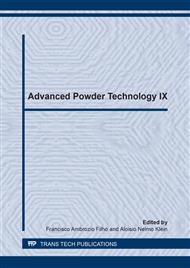p.140
p.146
p.152
p.158
p.163
p.168
p.174
p.180
p.186
Experimental Analysis of Behavior in TiO2 Nanoparticle Suspension
Abstract:
The deposition of TiO2 nanoparticles in the environment has been systematically investigated; this is due to the use of nanosized titanium dioxide (TiO2) in a variety of consumer products such as sunscreens, cosmetics, paints and surface coatings as well as the environmental decontamination of air, soil and water. It is the generalized use which increases the concern that the nanoparticle TiO2 could pose a risk to ecosystems and humans. In this context, this paper aims to characterize different suspensions of nanoparticles of titanium dioxide. Although these particles are already incorporated in a wide range of products, the evaluation of their behavior and its effects on the environment and health start to grow now. So this paper aims to conduct a study of the behavior of TiO2 nanoparticles in aqueous suspensions. The study encompasses TiO2 solutions with ultra pure water with and without added NaCl, landfill leachate and tap water. The results obtained showed that the addition of NaCl in the solution increases the size of the TiO2 nanoparticles, showing that the sodium chloride functions as a binding agent when in contact with nanoparticles of titanium dioxide.
Info:
Periodical:
Pages:
163-167
Citation:
Online since:
December 2014
Price:
Сopyright:
© 2014 Trans Tech Publications Ltd. All Rights Reserved
Share:
Citation:


